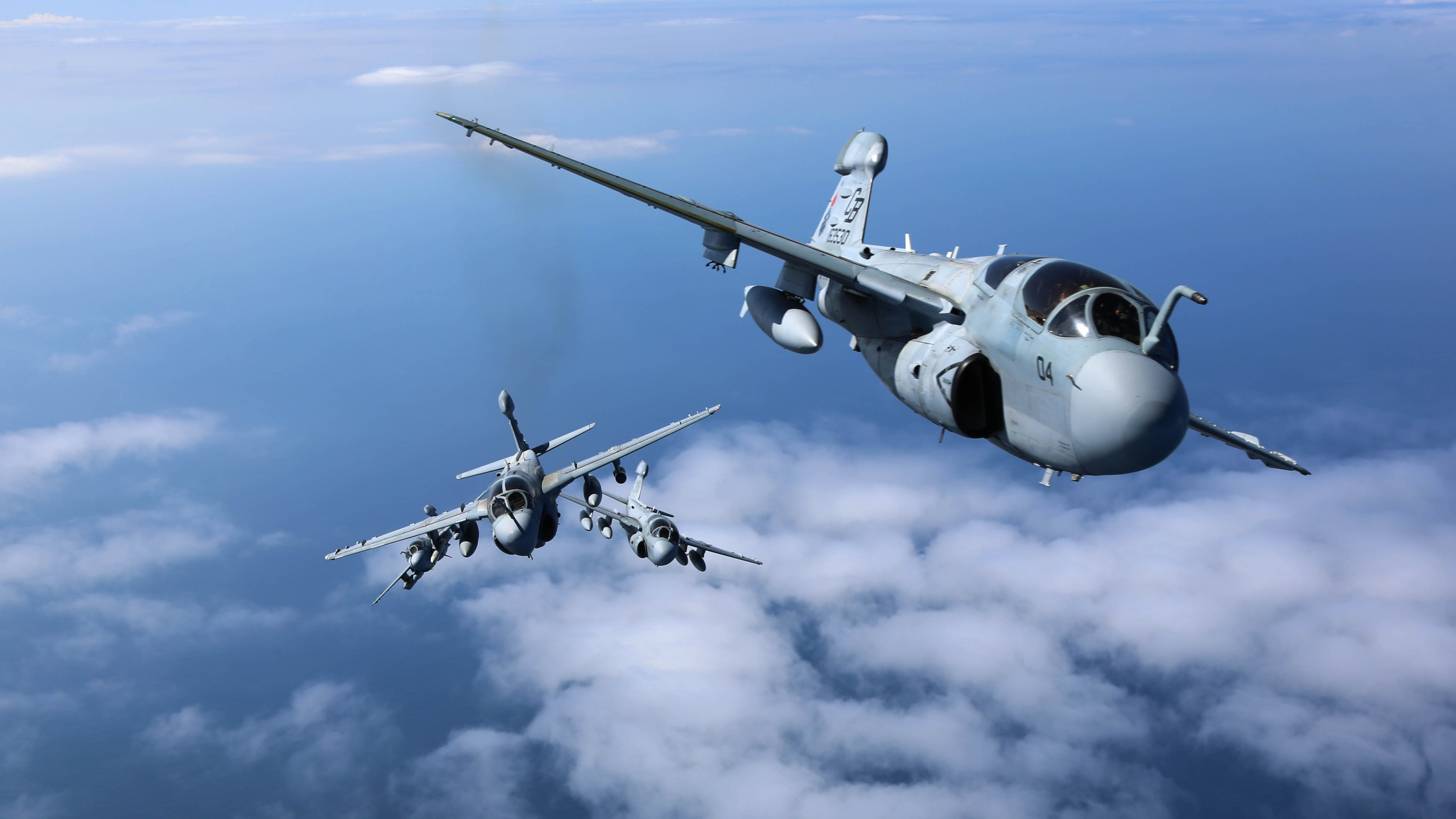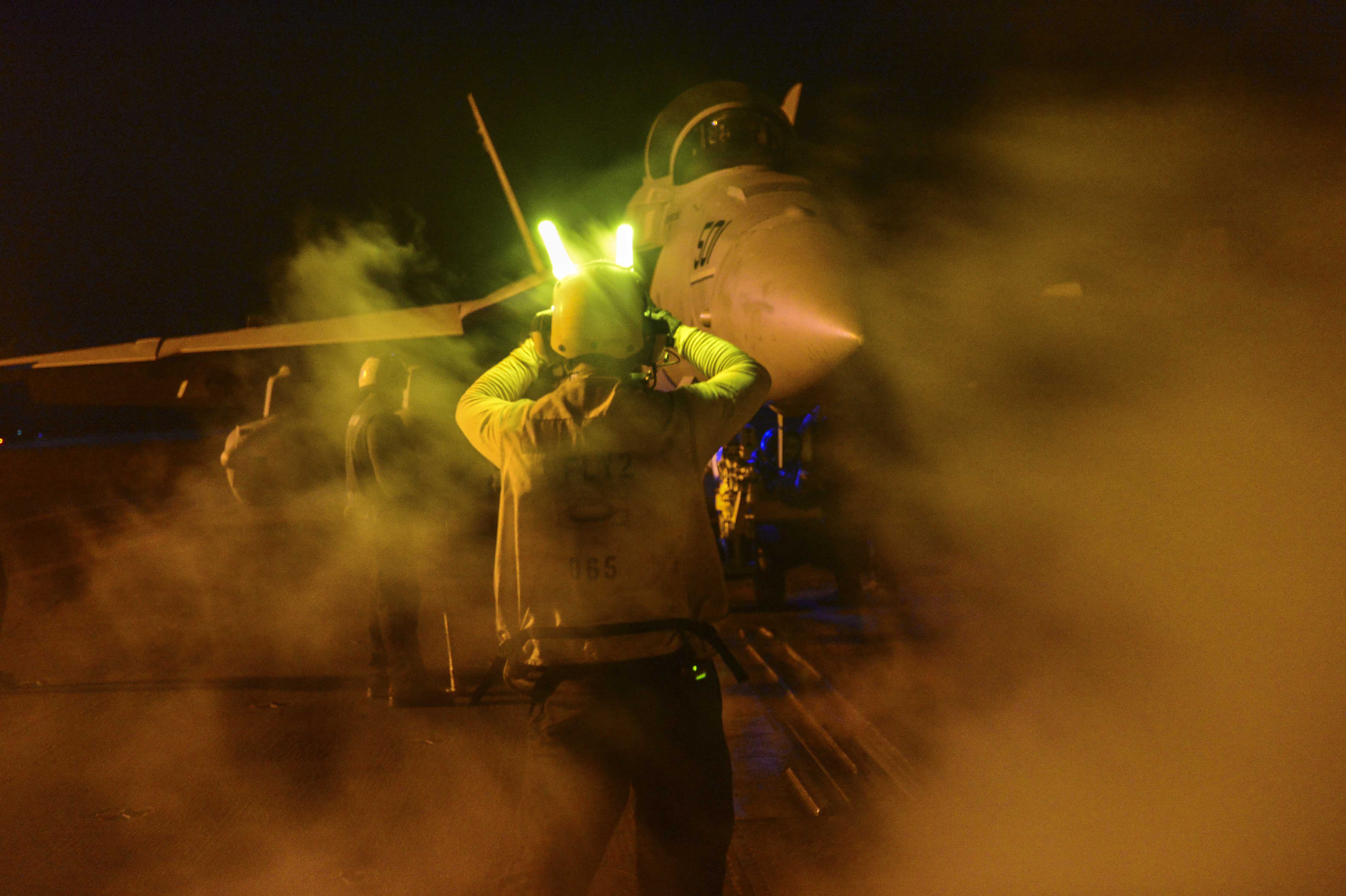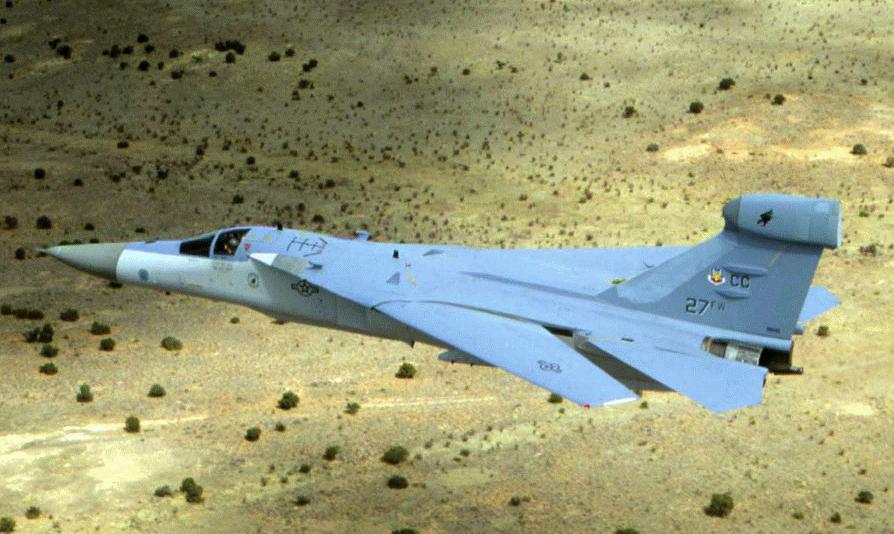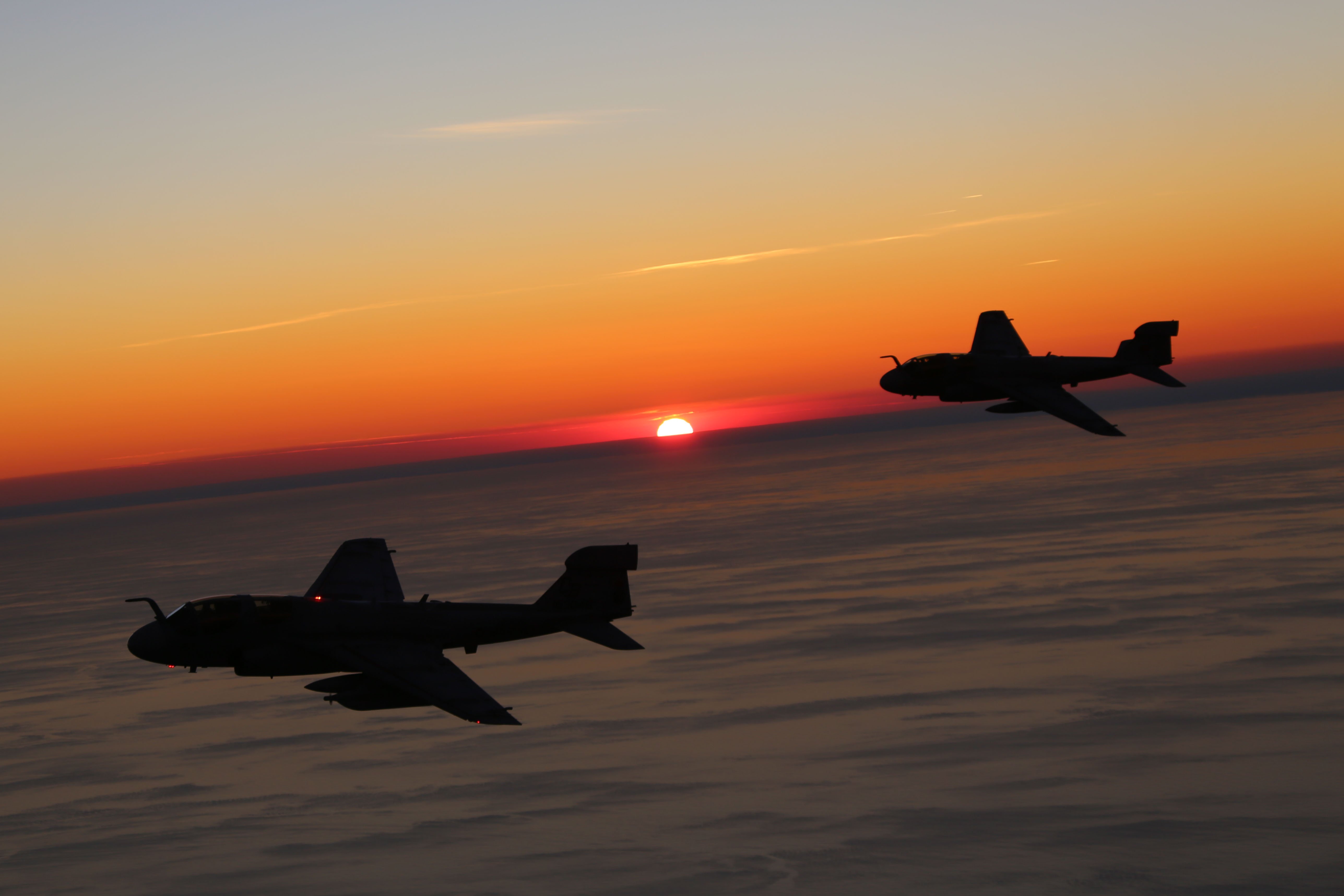
President-Elect Donald Trump has called for hard-hitting initiatives to be included in a first-100-day thrust to make America strong again. Hoping to be included in that effort are some common-sense, low-cost changes to our land-based expeditionary electronic warfare (EW) force posture that would immediately improve operational readiness and have a positive economic effect to boot.
These changes would delay, if not cancel, the ill-timed phase-out of Marine Corps EW aircraft; retaining the highly-trained aircrews; and a geographic realignment of the Navy’s expeditionary squadrons. These are proactive force posture changes that would signal a higher priority for warfighting readiness without increasing deployments abroad.
As the combatant commanders know – and our adversaries respect – this is about the frontline force they call upon to support warfighters engaged in operations across the spectrum of conflict. EW aircraft and their powerful electronic attack systems were initially designed to counter sophisticated air defenses but now support ground and special operations forces engaged in conventional and asymmetric warfare. These versatile assets are fully integrated into the battlespace command and control architecture to provide commanders unparalleled situational awareness and targeting to support battle management decisions. With an ever-evolving array of offensive EW weaponry that now extends to PSYOPS and on to cyber warfare, they are well equipped for sowing chaos in keeping with a strategy espoused by secretary of defense nominee retired-Gen. James Mattis.

Today EW forces may be tasked to counter improvised explosive devices and communication devices used by ISIS and the Taliban, or target frontline Russian-supplied surface-to-air missiles in Syria that they may be tasked to jam later on. In the Pacific, they stand ready to take on the sophisticated Chinese air defense systems protecting made-made islands as part of their anti-access/area-denial (A2/AD) strategy.
Since the retirement of the U.S. Air Force EF-111s in the mid-1990s, the expeditionary EW mission has been entrusted to the Navy and Marine Corps. That meant the Navy began sharing a mission pioneered by the Marine Corps during the Vietnam War and performed with distinction in the Persian Gulf and Balkan campaigns. For many years both services employed the EA-6B Prowler, initially designed to counter integrated air defense networks but quickly modified during the Iraq War to provide direct support to U.S. and coalition ground and special operations forces. Those efforts came in time for the Prowlers to support Marines engaged in the bloody fight for Fallujah in 2004.

The Navy has now retired its EA-6Bs and is transitioning both its carrier-based and expeditionary squadrons to the EA-18G Growler, a hybrid variant of the F/A-18 Super Hornet. Standup of the Navy’s expeditionary squadrons is not complete, with about 40 new production EA-18Gs yet to be delivered. The expeditionary and carrier-based squadrons are all to be homeported at NAS Whidbey Island, WA.
In a departure from the Navy’s aircraft modernization strategy, the Marine Corps some years ago chose to pass on the Super Hornet and Growler in favor of awaiting development of the F-35B, the V/STOL (vertical and/or short take-off and landing) variant of the Joint Strike Fighter. Unlike the Navy, the Marines saw the promise of the stealthy fifth-generation F-35B with its integrated EW systems as obviating the need for external support in high-threat environments. That premise resulted in the decision not to replace their aging EA-6Bs with new production EA-18Gs. Instead, their VMAQ squadrons are to be phased out in favor of a system-of-systems concept designed around non-dedicated platforms including UAVs to support the ground combat element. The first of four squadrons has already stood down and the second is scheduled to sunset in June 2017. Overall this plan stands down 50 percent of the joint expeditionary EW force and drops a Marine aviation capability that dates back to the Korean War.
These changes are still taking place as scheduled despite major delays in fielding the F-35B and its as-yet unproven capabilities to penetrate emerging air defense radar networks. It will be well over five years before half of the Marines F/A-18 Hornet aircraft that heavily depend on EA-6B support are replaced, and at least three years before the system-of-system concept bears fruit.
There is no planned back-up reserve capability.

The resulting three- to five-year gap in expeditionary EW capability impacts Marine Corps and joint force readiness and must be dealt with quickly by the new administration. Suspending the retirement of the VMAQs and retaining their highly trained and career-oriented EW officers is an obvious first step. They remain a vital component of the force that must be able to “fight tonight” and contribute to joint warfighting requirements. Given the circumstances, this should garner Commandant of the Marine Corps Gen. Robert Neller’s support, as it is in keeping with his recently stated priorities to beef up the Marine Corps’ cyber/EW capabilities.
Luckily the former chief of naval operations, Adm. Jonathan Greenert, an avowed EW advocate, committed the Navy to taking additional EA-18Gs funded by a far-sighted Congress to support both carrier-based and expeditionary requirements. This will help bridge the capability gap but raises operational readiness issues given that all the EA-18Gs are destined to be homeported at NAS Whidbey Island. It’s noble in intent but highly questionable from a roles and mission standpoint that all land-based EW aircraft will be owned by the Navy, the service with the least natural ties and expertise in ground combat operations.
To compound that issue is the imbalance in cross-training afforded joint forces if the entire expeditionary EW force is based on the Northwest coast. The inherent logistical advantages of single-site basing must be secondary to restoring joint force operational readiness and improving joint force warfighting capabilities, two key stated objectives of the Chairman of the Joint Chiefs of Staff Gen. Joseph Dunford. It is also counter to warfighting doctrine which calls for synergistic training of all combatants under train-as-you-will- fight scenarios. Bear in mind over half of the Army, Marine Corps, SOF and tactical Air Force units are in the eastern U.S. Additionally, DoD has a sizable investment in East Coast ranges that continue to be under-utilized for EW training.

Given the increasingly unsettled Middle East and NATO commitments, a realignment of expeditionary forces would send a message to Russia, its Syrian cronies and Iran that the pivot to the Pacific is not an open door for adventurism elsewhere in the world. Achieving a geographic balance by establishing an East Coast homeport for the EA-18Gs is consistent with long-held Navy policy. Eventual re-commissioning of a reserve squadron on the East Coast should also be considered, as there was an EA-6B squadron based at Joint Base Andrews before the transition from Prowlers to Growlers began. Again, the timing is right, as new production deliveries will support standup of EA-18G squadrons on the East Coast.
Finally, the regional economic benefits must not be ignored. Ironically, the increase in aircraft loading at NAS Whidbey Island has created an environmental impact even as the draw down in EA-6Bs at Marine Corps Air Station Cherry Point, NC, and delays in the F-35B deliveries are causing serious economic concerns. One would think North Carolina officials would see now is the time to put aside fears that questioning the EA-6B drawdown would somehow be viewed as threatening the F-35B. In fact, they should be making the case to homeport the Navy expeditionary EA-18Gs at MCAS Cherry Point.
For the first time since the Reagan years the Pentagon’s table of change is set and invitations sent from the new commander-in-chief. For the Marine Corps, this may mean more Title 10 missions “such as the President may direct.” No regrets please, the joint warfighters now more than ever need you to bring your proven EW assets to the table.




